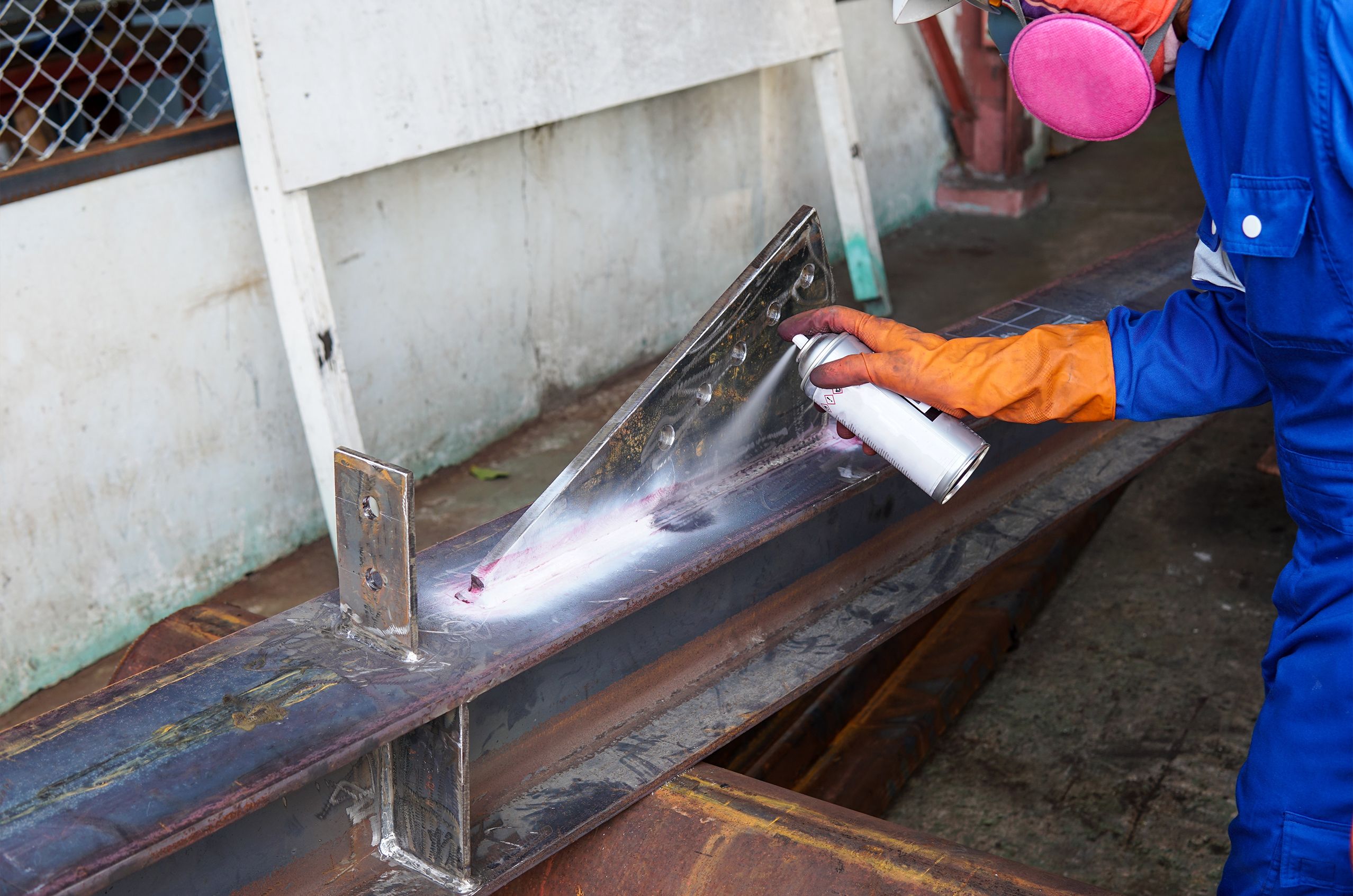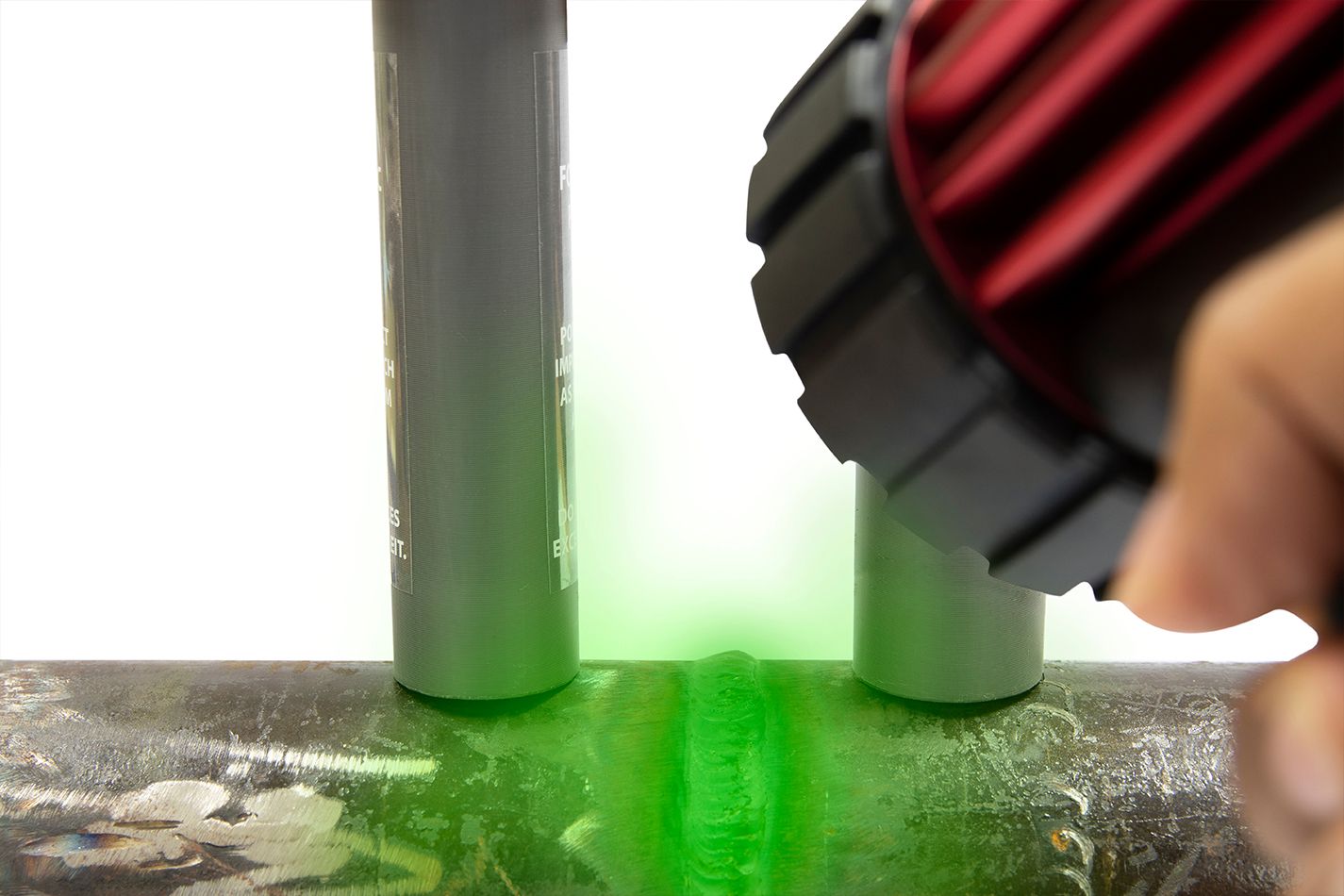Steps in the Liquid Penetrant Testing Process
1
Surface Preparation
Clean the part to remove any contaminants.
2
Penetrant Application
Apply a penetrant and allow to dwell for a specified time.
3
Excess Penetrant Removal
Remove excess penetrant from the surface.
4
Developer Application
Apply a developer to draw out the penetrant from defects. Allow to dwell for a specified time.
5
Inspection
Inspect the part under appropriate lighting conditions to identify indications.
6
Post-Cleaning
Clean the part to remove any remaining testing materials.

















